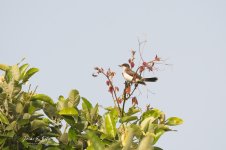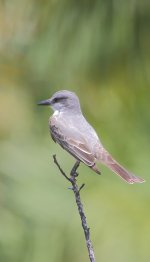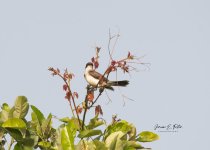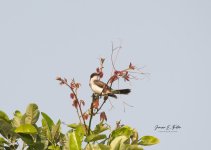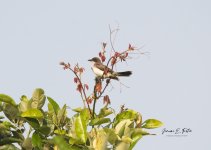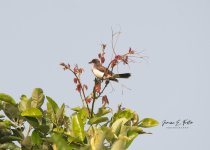Brandon Woo
New member

A friend of mine saw this while birding in Trinidad over the weekend. Now from the information I’ve gathered, Gray Kingbirds have a distinct dark mask, longer notched tail and bill, larger size, paler overall colour and broader wings whereas Eastern Kingbird have a black head, gray breast and dark gray wings. One more thing, Gray Kingbirds are uncommon residents in Trinidad and there’s only been one record of Eastern Kingbird here (December 1984). Personally I think it’s an Eastern Kingbird as it’s lacking some Gray Kingbird featues…
Attachments
Last edited:




